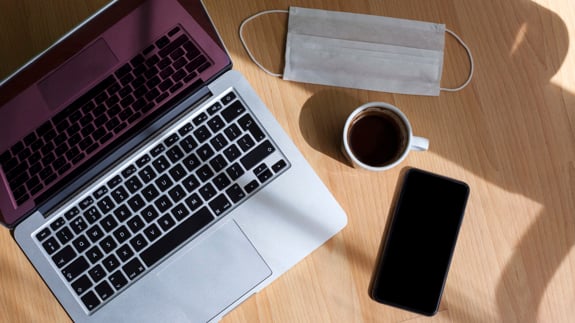- Doctors & Departments
-
Conditions & Advice
- Overview
- Conditions and Symptoms
- ¿Está enfermo su hijo?
- Parent Resources
- The Connection Journey
- Calma Un Bebé Que Llora
- Sports Articles
- Dosage Tables
- Baby Guide
-
Your Visit
- Overview
- Prepare for Your Visit
- Your Overnight Stay
- Send a Cheer Card
- Family and Patient Resources
- Patient Cost Estimate
- Insurance and Financial Resources
- Online Bill Pay
- Medical Records
- Política y procedimientos en el hospital
- Preguntamos Porque Nos Importa
-
Community
- Overview
- Addressing the Youth Mental Health Crisis
- Calendar of Events
- Child Health Advocacy
- Community Health
- Community Partners
- Corporate Relations
- Global Health
- Patient Advocacy
- Patient Stories
- Pediatric Affiliations
- Support Children’s Colorado
- Specialty Outreach Clinics
Your Support Matters
Upcoming Events
Colorado Hospitals Substance Exposed Newborn Quality Improvement Collaborative CHoSEN Conference (Hybrid)
lunes, 29 de abril de 2024The CHoSEN Collaborative is an effort to increase consistency in...
-
Research & Innovation
- Overview
- Pediatric Clinical Trials
- Q: Pediatric Health Advances
- Discoveries and Milestones
- Training and Internships
- Academic Affiliation
- Investigator Resources
- Funding Opportunities
- Center For Innovation
- Support Our Research
- Research Areas

It starts with a Q:
For the latest cutting-edge research, innovative collaborations and remarkable discoveries in child health, read stories from across all our areas of study in Q: Advances and Answers in Pediatric Health.


How to Give a Child an Enema at Home
Where comprehensive care, personalized attention and world-class experience meet to treat patients with complex colorectal disorders.
Enemas are sometimes a necessary daily treatment for children with colorectal conditions such as anorectal malformations, constipation and encopresis. The experts at the International Center for Colorectal and Urogenital Care may recommend daily enemas for your child at home during a short amount of time to clear impacted stool from the bowel or for the daily treatment of fecal incontinence. If at-home enemas are a good option for your child, your child's care team will show you how to properly give your child enemas.
Watch this video to learn more about how to give your child an enema at home.
Ingredients to use for a home enema solution
We prefer normal saline enemas, which can be mixed at home. The doctor will give you specific guidelines for your child's enema. Sometimes it is necessary to add glycerin, castile soap or phosphate to the enema solution to produce a satisfactory bowel movement.
Recipe to make normal saline enema:
- Dissolve 1 teaspoon of table salt in 1 liter (1000 cc or ml) of water to make the correct concentration of saline.
- Take the recommended amount of saline prescribed by your doctor and mix in the recommended ingredients.
- You will deliver the enema through a soft silicon tube (known as a Foley catheter), which you can easily insert into your child's rectum. This tube is approximately 4 inches long.
- Your child's doctor will tell you how much fluid to deliver when you give the enema to your child as well as the amount of any other ingredient needed.
How to give a child an enema
To deliver an enema, place your child on their side or stomach with their knees pulled up under their chest with their bottom in the air. These two positions are most effective for giving enemas because they allow the fluid to be instilled easily into the colon by taking advantage of gravity.
Once you insert the catheter, inflate the balloon at the end of the catheter. Use 20 to 25 cc (ml) of water to inflate the balloon once the catheter is in the rectum. This forms a "plug" and prevents the enema fluid from leaking out of your child's bottom. Once you have given the fluid, your child should remain in the "enema position" for five to ten minutes. This can be difficult for young child but keeping the child in this position will help to keep the interaction between the fluid and stool as long as possible. Use a timer so the enema's retention time is constant every day.
After five to ten minutes of enema retention, have your child sit on the toilet for about 45 minutes to allow the bowel to empty completely. This experience can be made more pleasant by having books, art supplies or videos available. If your child is in diapers, you can simply put a diaper on your child and wait for the recommended 45 minutes.
When to give a child an enema
Enemas should be given at about the same time each day when used for fecal incontinence treatment. This will help your child stay free of stool accidents.
Things to watch out for when giving an enema
- It is important that your child is hydrated before they receive an enema. Being hydrated means your child has had the amount of liquids recommended by their doctor.
- Infusing the solution too fast may cause dizziness.
- If your child has not had a bowel movement after one hour of the enema infusion, you can reinsert the Foley catheter to drain the enema fluid. Let your doctor know your child did not have a bowel movement after one hour.
- If an enema has been working and suddenly your child starts to have stool accidents, please tell your child's doctor because the bowel management may need to be adjusted.
How to schedule an enema training
Every month we dedicate one week for bowel management to determine the amount of laxatives that your child may need to empty their colon on a daily basis. We also determine the specific enema that you should give to a child with fecal incontinence once a day to help keep them clean.
Call our office at 720-777-9880 to find out when the next sessions are scheduled to happen.



 720-777-0123
720-777-0123




